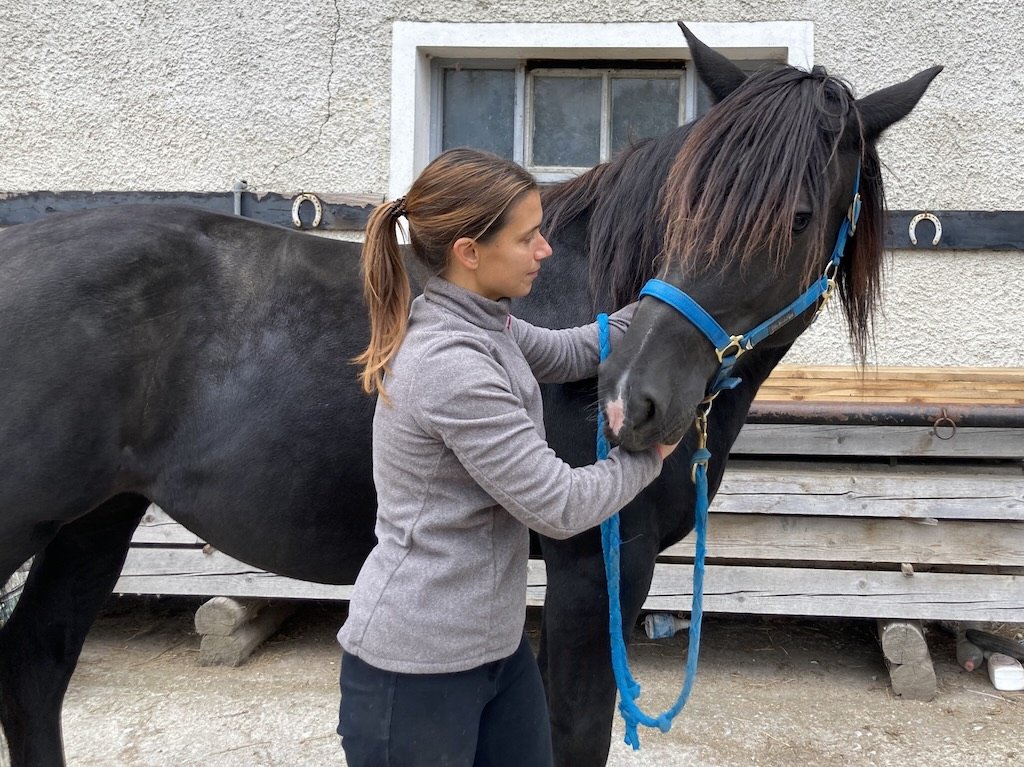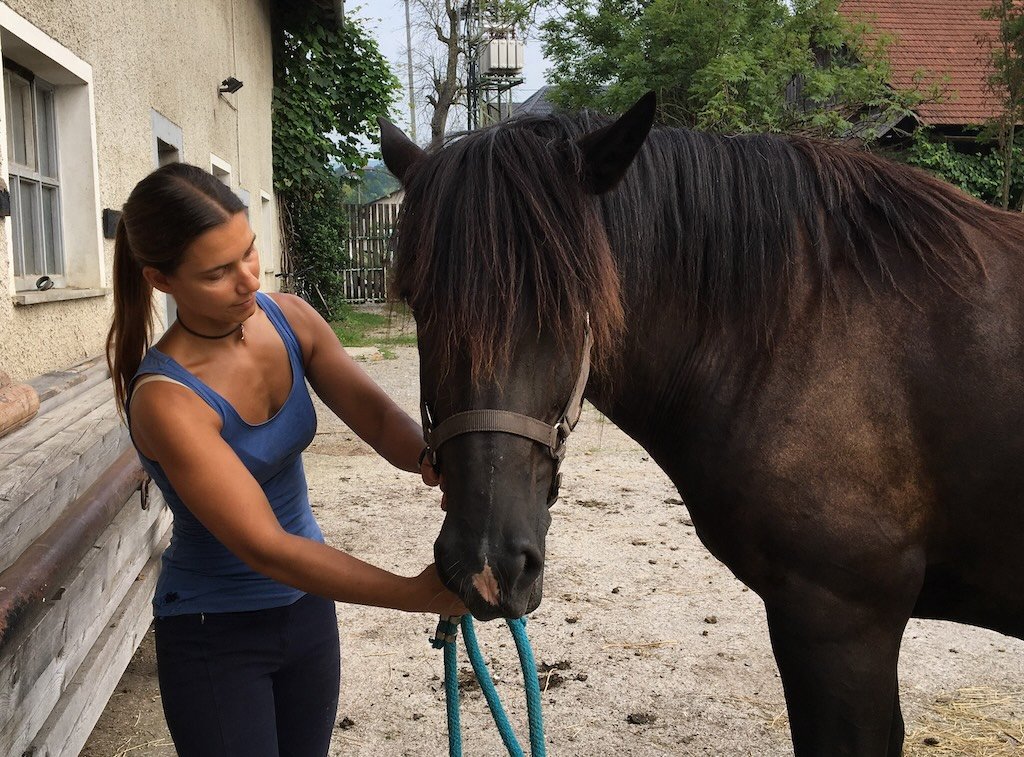Want to mobilize the neck? Here's how!
The neck can be a source of pain and stiffness which is why many riders try o use exercises to make it more supple. Instead of bending the neck sideways with the use of reins or carrots, here is a better way to do it.
When talking to the nervous system, it’s all about, slow, gentle movements.
Neck stiffness and pain is a very common occurrence in horses and it is most often coupled with dysfunction in the thoracic sling and imbalance in the front feet. A lot of horses have a tendency to brace in the neck, reducing its range of motion and restricting the free flow of energy from the hind legs to the poll. Bracing in the neck is a pattern that is sometimes hard to change, which is why it often needs more attention. Having a supple but strong neck requires the horse to not only be able to use his neck muscles actively, but to be able to relax them as well. This is the part many horses struggle with. Often this need to brace stems from the expectation of pain, which can persist even after the pain is gone. When this is the case, gentle mobilizing exercises can be beneficial to show the horse that the neck is no longer painful and no longer needs to be over-protected.
When we talk about neck mobilizing exercises, a lot of people imagine things like bending the horse’s neck to one side and then the other with the reins, or carrot stretches, focused on the motion of the neck. But neither of these are really what we are looking for when trying to interact meaningfully with the nervous system. In both these exercises, the horse is actively moving his neck by using his muscles and as he does that, he can still be bracing around the vertebrae. So, we are basically just reinforcing the bracing pattern in some cases. In addition to that, both these exercises are usually done too fast for the nervous system to have an opportunity to assess the movement. The faster it's done, the more bracing there will be, as faster movements are generally seen as potentially more dangerous. Whenever we want to talk to the nervous system and show the horse a certain movement or position is safe, we need to do it very, very slowly.
So, here's a better way to reduce tension in the neck and facilitate suppleness. Start in a calm environment, where the horse is relaxed. Make sure to take plenty of time and pick a time of the day when the place is quiet. Stand next to the horse and put one hand on the bridge of his nose and rest the other on the base of his neck. Wait for the horse to relax. Slowly guide the head slightly to one side, but make sure to go very, very slowly. The second you feel any resistance at all, stop and just follow wherever the horse goes with his head. Wait. As the horse relaxes again, repeat. Guide the head gently sideways and release as soon as you feel him tense up. Don't wait for him to pull the head away, but instead release as soon as you feel the slightest tension in his muscles. If he doesn't tense up continue gently guiding the head sideways. Repeat three times on each side. What you are doing here is showing the nervous system how far the head can move while still being safe. The important thing here is to never go past the bracing threshold. In this way, the nervous system can relax, because it soon learns that you're not going to go past the point of perceived safety. Every time you do this, the nervous system will think »ok, this was safe the last time, I don't have to be fully alert, maybe we can go a bit further«. In this way the horse learns that positions that seemed scary are actually safe and quite pleasant. Some horses are not too happy about being touched on the bridge of their nose. In those cases, you can guide the head sideways by taking hold of the halter, just make sure you are very, very gentle.
Even very small movements can have a big impact on how the horse perceives his neck.
You can do this exercise both before and after riding, just make sure to always take enough time with it. Rushing will have a negative effect and will do more harm than good. Pay attention to your body as well during this exercise. Make sure to relax, breathe and let go of tension around your shoulders. When executed properly, this exercise not only mobilizes the neck, but relaxes both the horse and rider.

